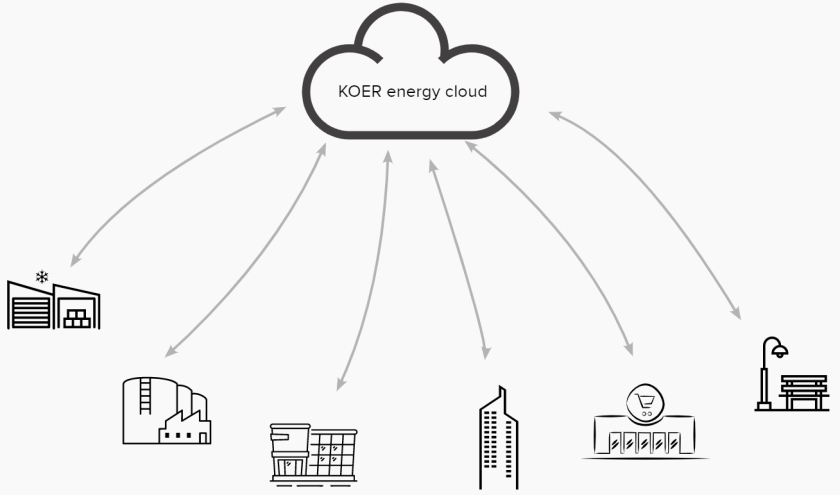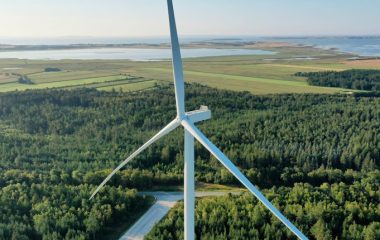
Photo: Lucascgouvea0 from Pixabay
The law in Croatia allows households with solar panels to group and place excess energy in the market, though technical solutions are still too expensive. The country’s first virtual power plant, or aggregator, is now paving the way for bundling the geographically dispersed small power sources, while there will be other options for prosumers as well.
The participants at a webinar on virtual power plants as a new factor in the energy market presented the concept of Croatia’s first virtual power plant, opened recently by KOER, and raised the issue of the rising number of households that have rooftop solar panels as well as battery systems big and small.
A virtual power plant is a cloud-based distributed power plant that aggregates the capacities of distributed energy sources and enables an increase in electricity generation and trading and sales of electricity. The definition is complicated for amateurs, so the event was organized to describe the concept to the public.
The technology enables the operator to unify available electricity sources, but also to cut power use in case the grid is overburdened, like when a sudden change in weather conditions weakens output at solar parks and wind power plants. Its role is to help balance production and consumption. Free capacities like diesel aggregates are activated to boost production or, in the opposite case, a factory in the system can briefly stop working to reduce consumption.
Artificial intelligence will have an increasing role in preserving the stability of the electricity system and the optimization of surpluses
It is not a power plant in a physical sense, but an aggregator – specialized software enables automatized management of capacities, where it has to centralize, process and analytically display the data and enable the communication with the electricity transmission system operator.
The experts who spoke at the webinar agreed that with an increase in the number of small power producers, the introduction of battery systems for energy storage and penetration of electric vehicles, artificial intelligence would have an increasing role in preserving the stability of the electricity system and the optimization of surpluses.
As virtual power plants have technical possibilities and a legal basis for the inclusion of small rooftop solar panel systems in the market, it could become a course of development and motivate households and small firms to become prosumers as well as add their batteries to the system.

Virtual power plants are like pumped storage hydropower plants
KOER’s Director Marko Lasić compared virtual power plants with pumped storage hydropower plants. “A pumped storage hydropower plant can deliver energy to the system and it can take energy from the electricity system. Unlike a classic power plant, which is a physical unit in one location, a virtual power plant simultaneously manages a group of distributed consumers and sources to achieve the effect of a classic power plant – take and deliver energy,” he stated.
When it comes to available capacities that can reduce electricity consumption upon demand, it is like a real power plant was activated to cover a power shortage. Such partners are paid for the service.
An aggregator imultaneously manages a group of distributed consumers and sources to achieve the effect of a pumped storage power plant – take and deliver energy
When KOER established its virtual power plant, it said it is providing the service of lowering consumption for the Croatian Transmission System Operator (HOPS) and that it would later introduce the service of increasing consumption in cases of an unforeseen rise in supply, which can also cause issues for the electric power system.
The cost to integrate an industrial facility is currently in the range of EUR 4,000, though some newer and more digitalized locations are easier to connect, Lasić asserted. In his view, integrating small prosumers is still not cost-effective, but grouping them can help.
Preparing for 100% renewable electricity system
The concept of the past several decades that production and consumption have to be equal at all times is partly changing with the increase of the share of renewables, as it increases unpredictability, according to HOPS’s Assistant Director Antun Andrić, in charge of the market department. He explained the company contracts reserves from the network’s users and activates them when it needs to balance the system as well as to keep the frequency stable.
In time, HOPS will need to secure 100% of the ancillary grid services from renewable electricity, whether from independent entities or through aggregators, Andrić pointed out.
There are several legal solutions for prosumers to access the market
When it comes to distributed flexibility, national distribution system operator HEP ODS has an important role, he added and suggested that upcoming bylaws could enable groups of owners of rooftop photovoltaic systems to offer the company the ancillary service of voltage regulation on a local level directly, without an aggregator. It is possible that such entities will get direct access to the wholesale market or work with suppliers or other participants, Andrić said.
Market access for small photovoltaic systems is the responsibility of the Croatian Energy Market Operator (HROTE) and it depends on future regulations, he added. Andrić suggested one opportunity is in the establishment of energy communities, which the law allows. There are other models in the law that make market access for prosumers possible: group of active buyers, renewable energy community, independent aggregator, and supplier that can be an aggregator, he noted.
Virtual power plants should become brokerages in electricity market
President of the Eko Kvarner civic association Vjeran Piršić stressed that there are more than 150 units of the kind in the island of Krk and that groups of small photovoltaic systems need to get a role in the market. The island has long been standing out among Croatia’s regions and not only in the solar panel segment, but also in waste management and other forms of environmental protection.
Piršić revealed that during the webinar his solar panels were generating eight times more electricity than the household’s consumption and that the batteries were full. He argued he would like the possibility to sell the surplus.
Lučijano Sangaleti, head of business development at Končar – Digital, said the residential sector has a great potential for aggregation including household and car batteries. Moreover, virtual power plants should become brokerages in the electricity market, in his opinion.









Be the first one to comment on this article.